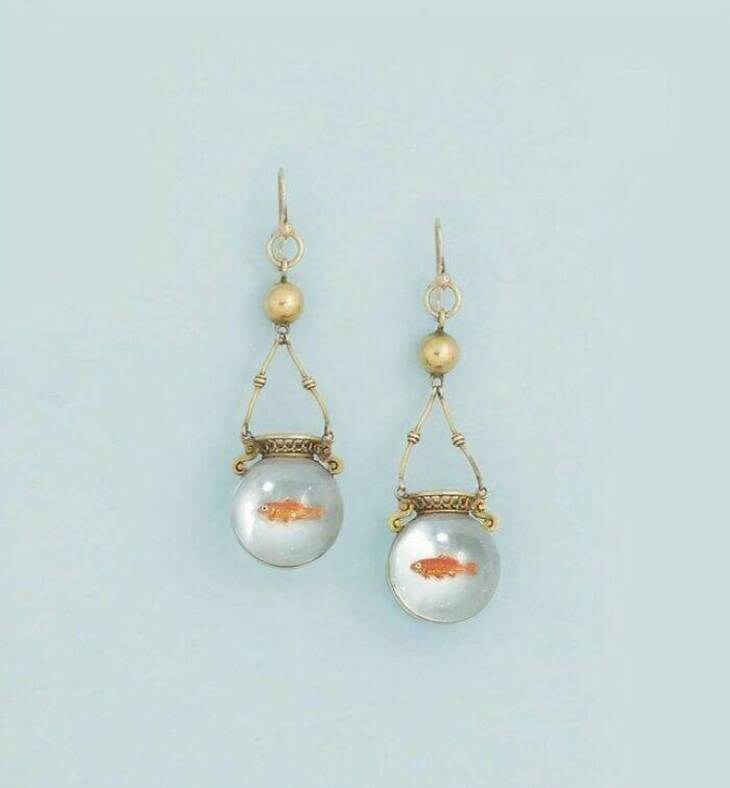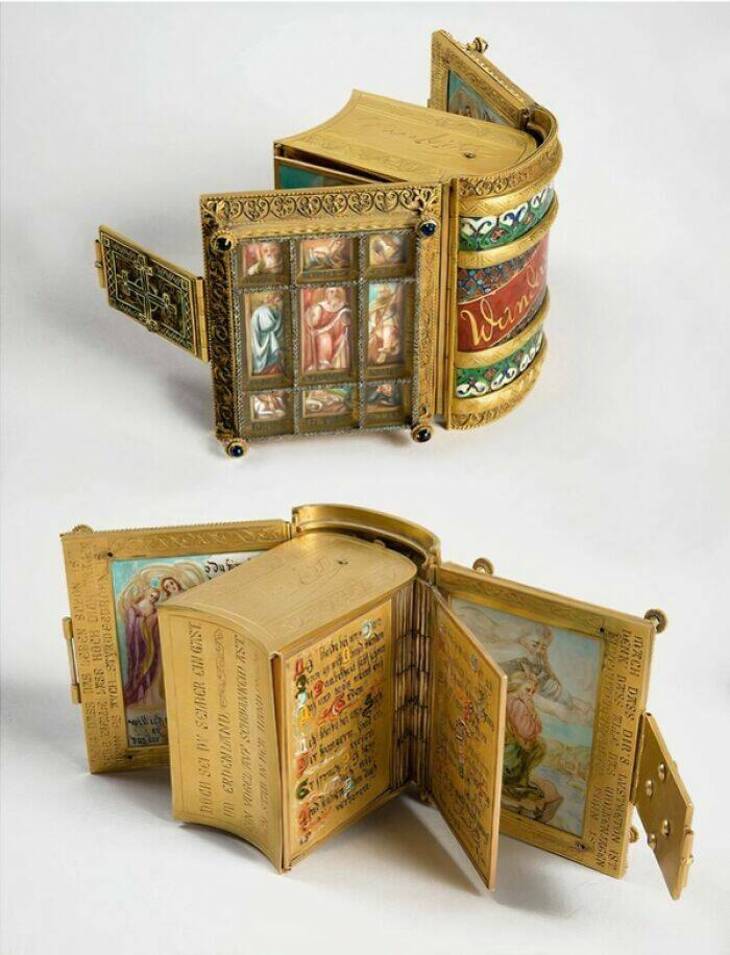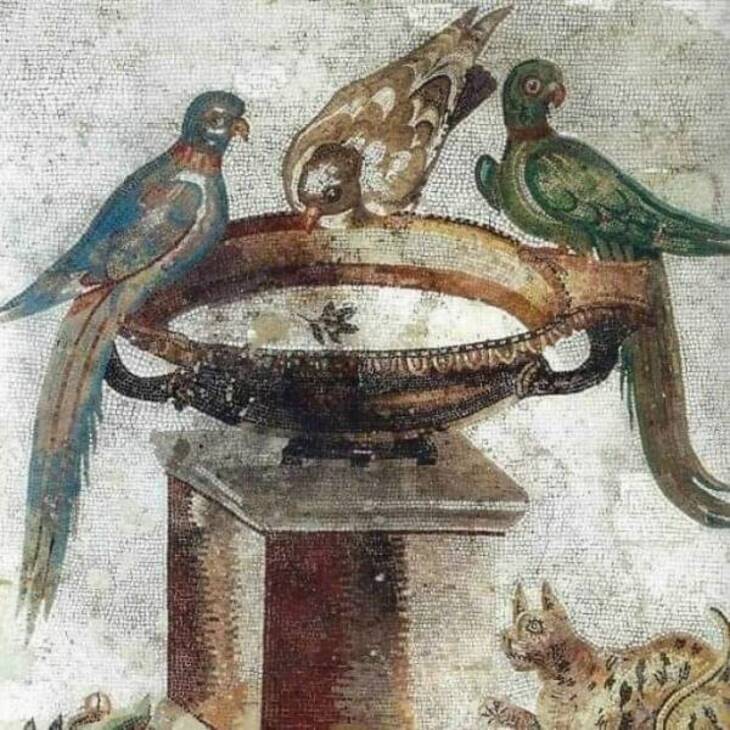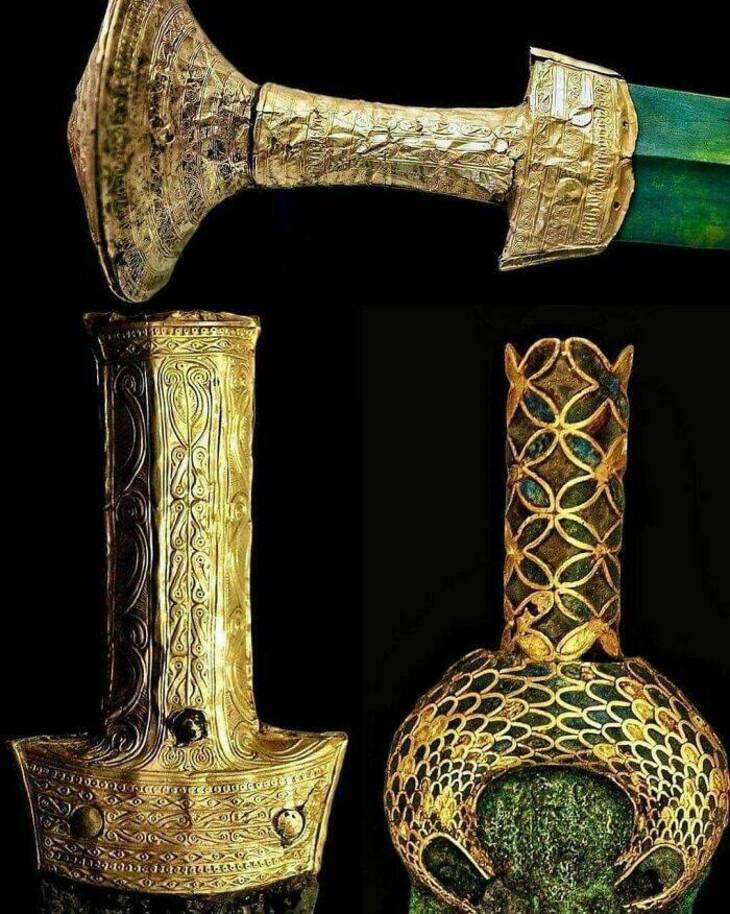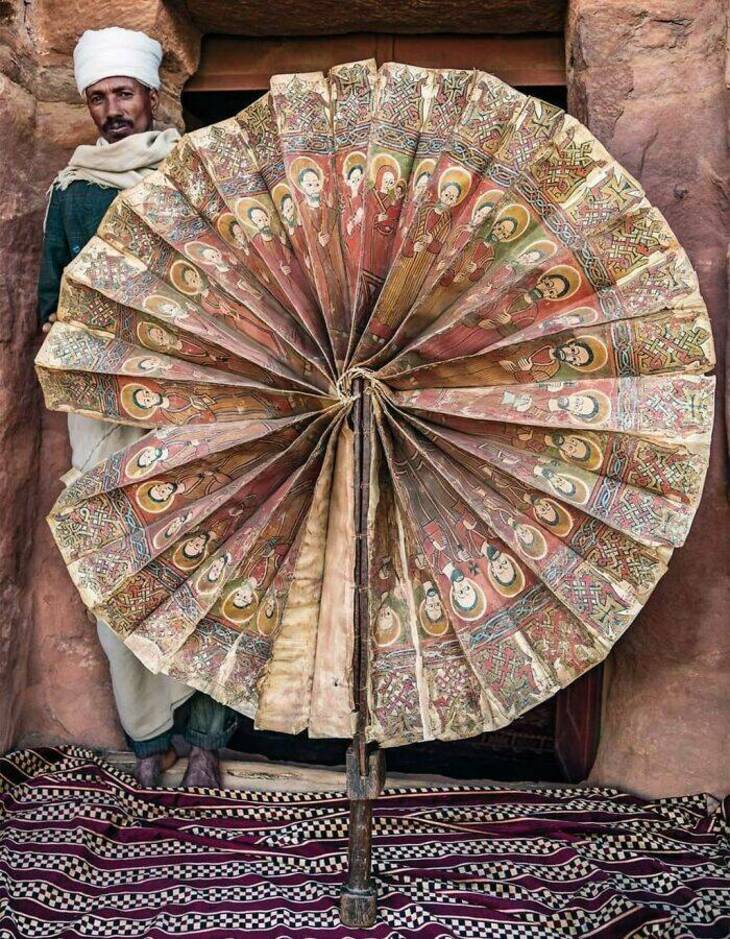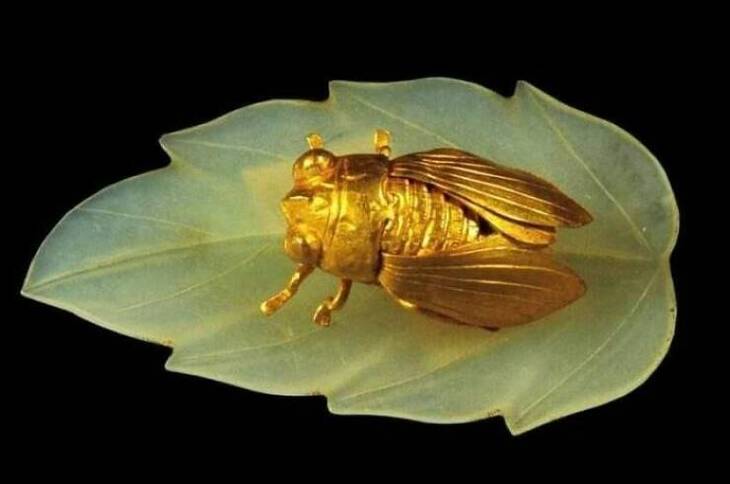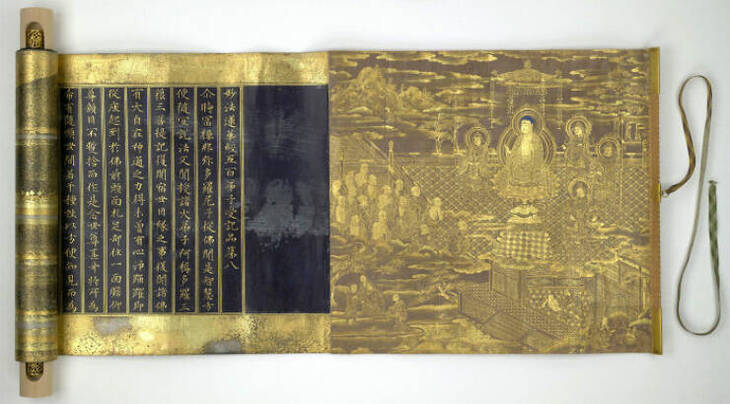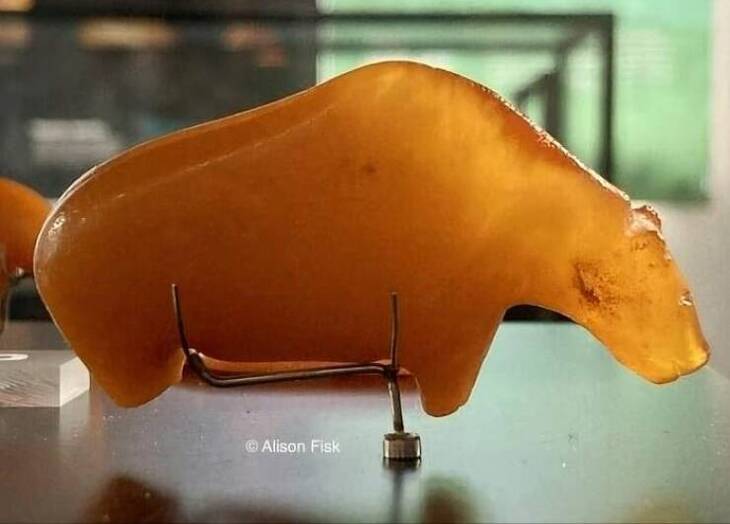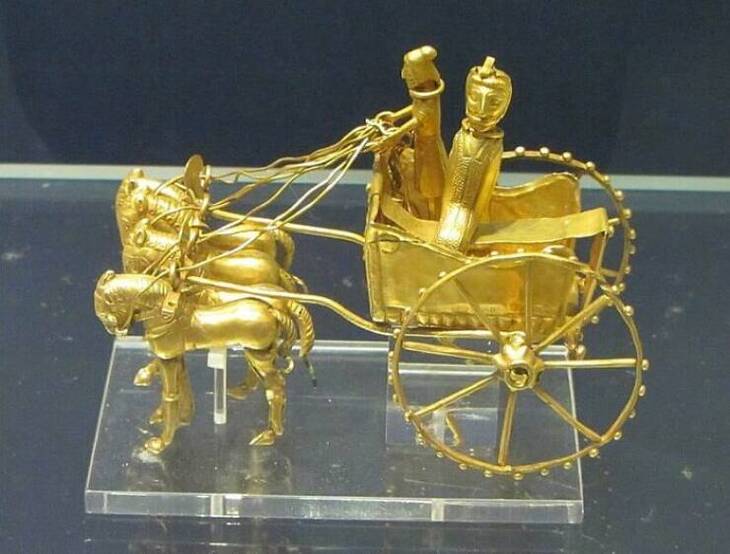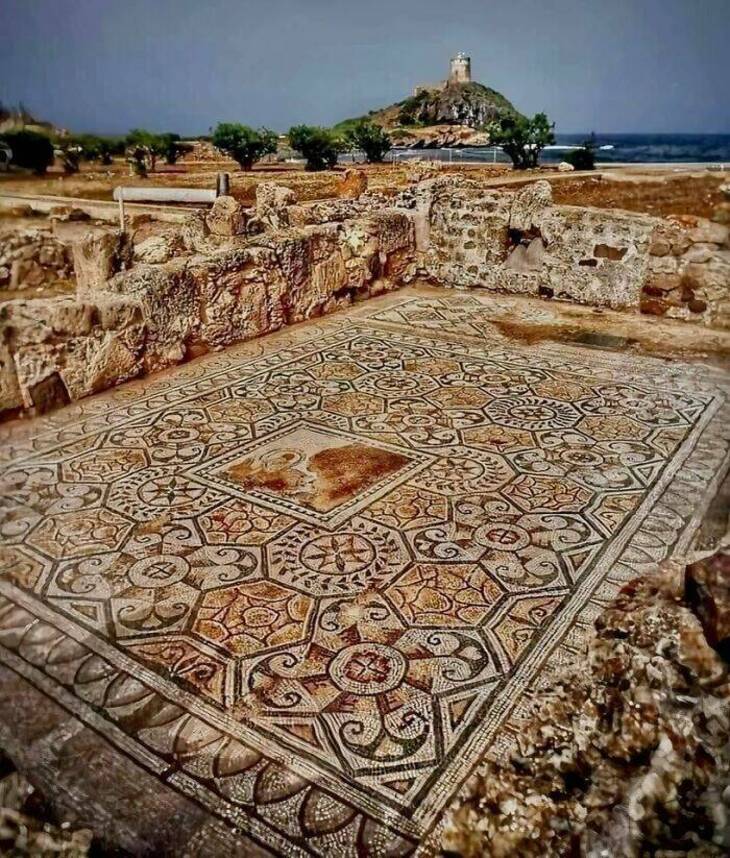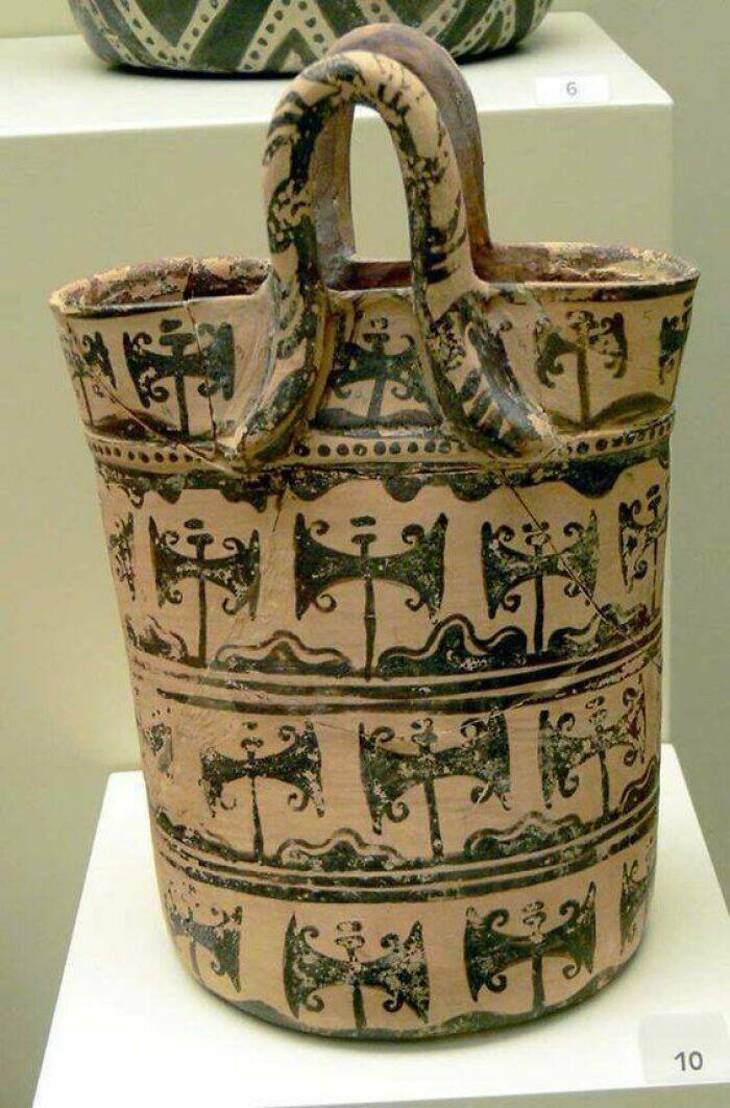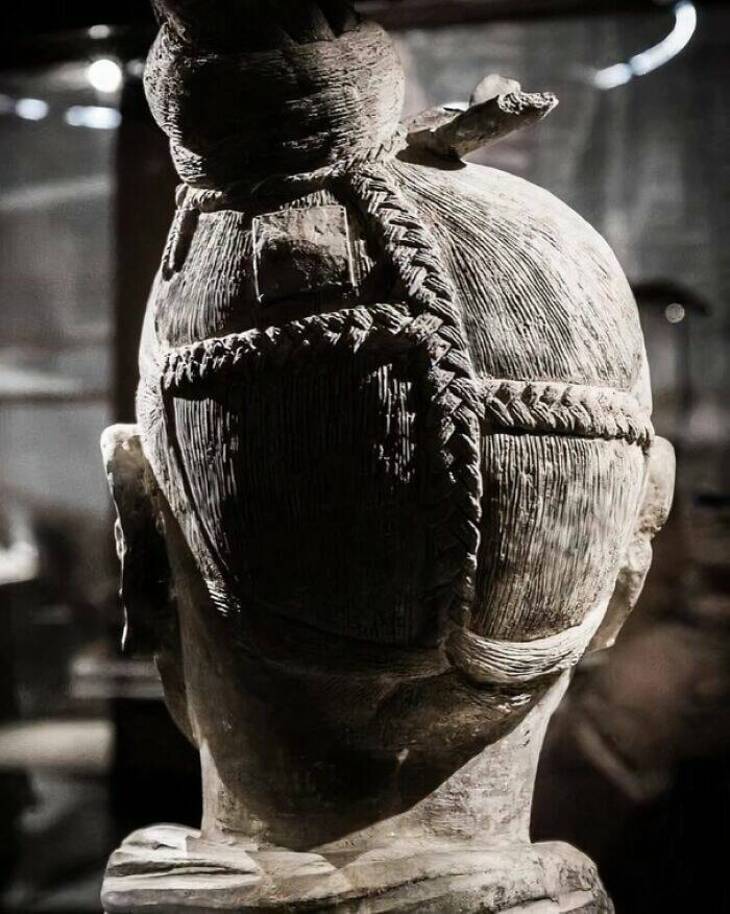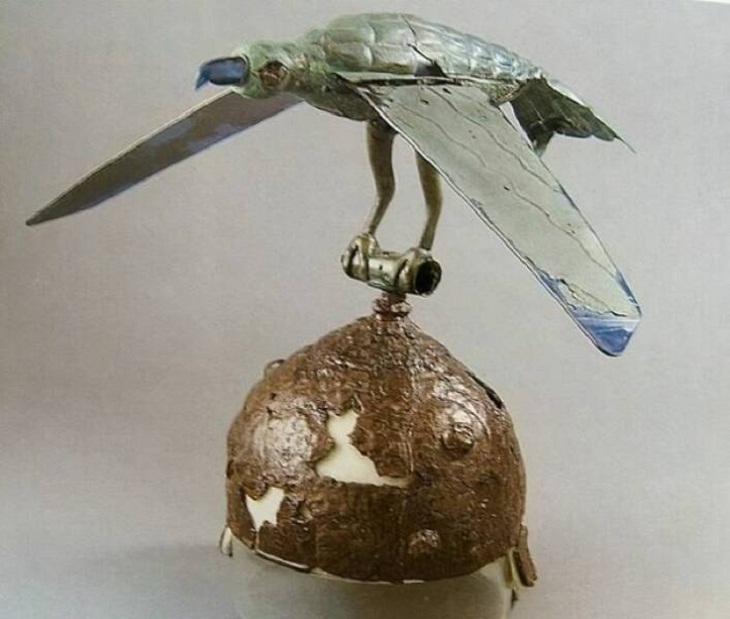Artifacts from ancient civilizations give us a glimpse into how ancient people lived, worked, and worshiped. There is more to these pieces than just their splendor; they hold clues that unravel mysteries of lost worlds. The best part is that exploring this anthropological treasure trove no longer requires visiting a museum in person.
Related: These Relics of History Are Both Art and War
An online community called "Ancient Marvels of Mankind" allows enthusiasts to share stunning discoveries from around the world. This collection of 16 images captures some of the world’s most intriguing ancient artifacts, each one steeped in history and wonder.
1. Made around 1500 BC by a North German artist, this 10-centimeter boxwood peapod is a marvel of micro-carving. Inside, a surprise awaits: tiny peas, which, upon opening, unveil ten intricate scenes depicting stories from Genesis.
2. A pair of Victorian reverse painted crystal intaglio earrings, 1870.
3. This miniature book with the poem "Wanderstab" - "Travel Staff" - was given by Queen Elizabeth of Romania to Princess Maria of Edinburgh. The poem, likely chosen for its themes of journey and exploration, speaks to the shared experiences and connections between these two royal figures.
4. A 1st Century AD, Roman Mosaic with parrots and dove drinking from a fountain and a lurking cat, found in Santa Maria Capua Vetere, Italy.
5. Collection of Mycenaean weaponry. Swords, 16th–12th century BC. The Mycenaean military was a formidable force and was known for its advanced warfare technologies. They employed chariots, bronze armor, and organized infantry tactics, reflecting a highly structured and powerful martial culture.
6. This ceremonial fan, dating back to the 15th century, hails from the Abuna Abraham Debre Tsion Church in Ethiopia's Tigray Region. Its intricate design reflects the rich religious heritage and artistic skill of that era.
7. Unearthed in a tomb in 1954, this exquisite golden cicada perched on a jade leaf is a hairpin top from the Ming Dynasty (1368-1644). It speaks to the refined taste and status of its original owner, a woman of high rank.
8. Discovered in Turkey's Anatolia region, this obsidian mirror predates all others known to exist. Its convex surface and exceptional optical quality offer a fascinating window into the advanced craftsmanship of early civilizations.
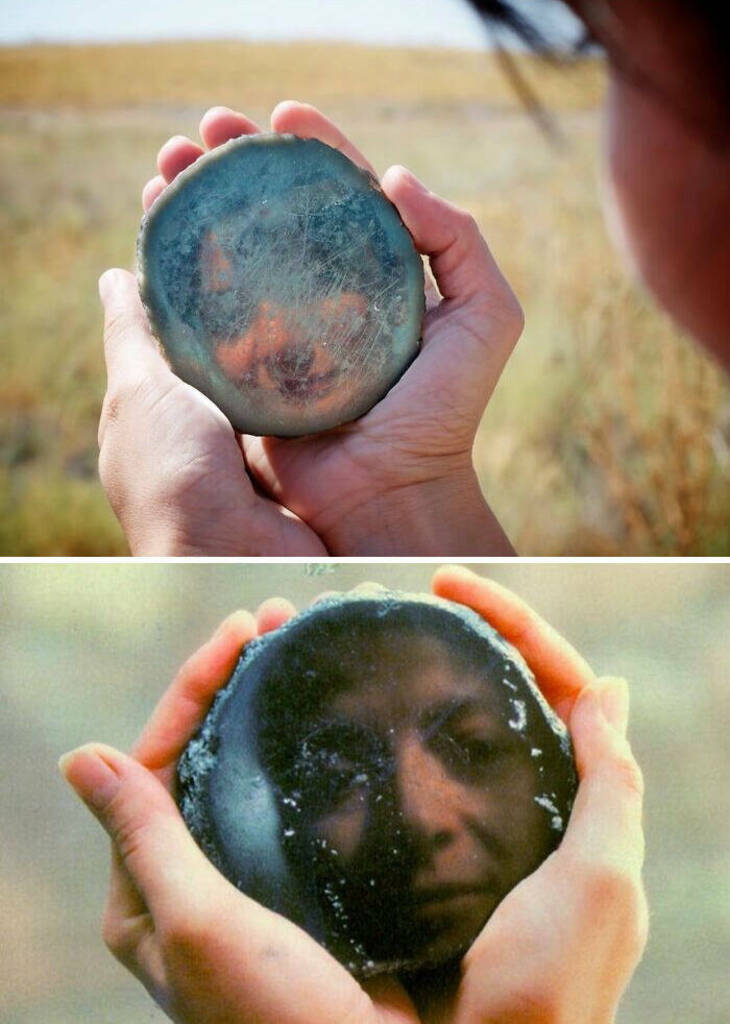
9. Dating to approximately 1636 BC, this beautifully embellished scroll from Japan is a copy of the Lotus Sutra—a seminal work in Buddhist teachings that emphasizes universal compassion and the potential for enlightenment for all beings.
10. Approximately 10,000 years old, this ancient amber bear was recently discovered on the coast of Fano, Denmark. Amber, a fossilized resin, often preserves remarkable details of ancient life, offering a rare glimpse into the Mesolithic era. This find adds to our understanding of the materials and motifs utilized by early human societies.
11. This exquisite golden chariot, crafted with astonishing detail, is a shining example of the artistic skills of the Achaemenid Persian Empire. Its intricate design and masterful execution reflect the empire's wealth, power, and deep-rooted cultural sophistication, particularly in the realm of metalworking.
12. The stunning mosaic found at the House of the Tetrastyle within the Pula Archaeological Park in Nora, Sardinia, Italy, dates back to the 2nd century AD. This intricate artwork, crafted with tesserae (small colored stones or glass), shows the Roman Empire's artistic brilliance and their mastery of mosaic techniques, which were used to adorn floors and walls of important buildings.
13. Found on the eastern coast of Crete, this unique clay "bag" from the Post-Palatial period (1450-1200 BC) displays the distinctive labrys symbol, a double-headed axe associated with Minoan culture. This artifact provides a fascinating glimpse into the symbolic language and artistic traditions of the Minoans, a civilization renowned for its advanced maritime trade networks and innovative architecture.
14. This incredibly detailed image captures the intricate hairstyle of a soldier from the renowned Terracotta Army, commissioned by China's first emperor, Qin Shi Huang. The level of craftsmanship in rendering such fine details is truly amazing and provides valuable insights into the hairstyles and personal grooming practices of ancient Chinese warriors.!
15. Discovered in archaeological sites across Austria, these clay vessels from the late Bronze Age were specifically shaped and sized for feeding babies. Their existence reveals the innovative strategies employed by ancient parents and caregivers to ensure the well-being of their youngest members, even thousands of years ago.
16. This Ciumesti helmet, discovered in Romania, is a remarkable Iron Age Celtic artifact. Adorned with a raven totem, this helmet shows the Celtic warrior's deep connection to the natural world and their belief in the spiritual power of animals. Celtic tribes who inhabited this region were known for their elaborate designs and skilled craftsmanship.


